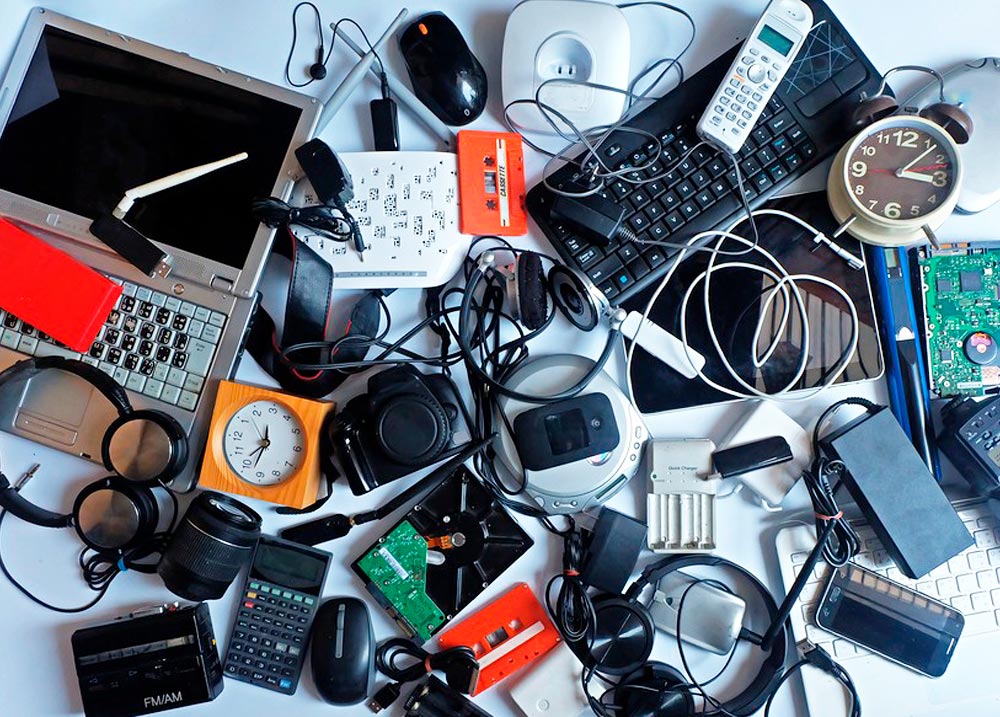The proper disposal of these materials is an increasingly urgent topic in a world highly dependent on technology. On October 14, International E-Waste Day is celebrated, a crucial date to raise global awareness about the need for proper disposal of such waste and to promote the recycling of electronic materials. When improperly discarded, these materials can cause irreversible damage to the environment and public health.
We live in a digital age where technology evolves at an impressive speed. Constant launches of new electronic devices lead to the quick disposal of older ones, often without the necessary care. The result is a significant increase in the volume of e-waste, which includes everything from cell phones, computers, and televisions to smaller items like batteries, cables, and chargers. Martin Junck, the founder of a company focused on electronic waste management, highlights the seriousness of this scenario, explaining that “any device that relies on electricity to function or contains electronic circuits becomes electronic waste when discarded.”

However, this type of waste is not like regular household garbage. The improper disposal of e-waste can be extremely harmful, not only to the environment but also to human health. Electronic devices often contain highly toxic heavy metals such as mercury, lead, and cadmium, which can seep into the soil and contaminate water bodies, harming ecosystems and posing severe risks to those living or working near landfills without proper infrastructure. Once in the environment, these substances can accumulate over time, becoming incredibly challenging to remove.
Additionally, there’s the issue of wasting valuable materials. Many electronic components can be recycled and repurposed to manufacture new products, including plastics, metals, and even internal circuit parts. Junck emphasizes that proper recycling of these products helps reduce the demand for natural resources, promoting a concept called the circular economy — an economic model aimed at extending the life cycle of products through repair, reuse, and recycling. This process not only decreases the amount of waste ending up in landfills but also reduces the need for extracting new raw materials, such as copper and aluminum, which have a significant ecological footprint.
Therefore, the best way to deal with e-waste is to ensure it is disposed of responsibly. Fortunately, various institutions, both public and private, provide specialized collection points for e-waste disposal. In major cities like São Paulo, Coopermiti — a cooperative dedicated to processing electronic waste — offers over 70 locations where people can safely and responsibly drop off their old devices. These collection points accept everything from larger items like televisions and refrigerators to smaller accessories like headphones and chargers. Once collected, these items are dismantled, and their reusable parts are sent to companies that utilize them in manufacturing new products, closing the circular economy loop.
It’s important to note, however, that recycling cooperatives do not repair electronic devices. Their work involves dismantling and separating parts that can be reused. This is why it’s essential for consumers to understand the importance of preparing their devices for disposal, ensuring all steps are properly followed. Below are five practical tips for the proper disposal of electronic waste:
- Never dispose of electronic waste in regular trash
Many people still have the habit of mixing electronic waste with household garbage, which is a serious mistake. Electronic devices require specialized treatment because, as mentioned, they contain toxic materials that can cause significant environmental harm. Throwing them in regular trash can contaminate landfills and complicate the recycling process. - Understand the role of recycling cooperatives
The goal of cooperatives is not to repair or refurbish devices. They dismantle products and send reusable parts to the industry. Components such as plastics, metals, and circuits are separated to be efficiently recycled and used in the production of new devices. - Separate electronics from other types of waste
When discarding your items, it’s crucial to separate electronic products from other types of garbage, such as paper, glass, or metal. This separation facilitates the work of cooperatives and ensures that each material is directed to the proper recycling process. - Erase all personal data from devices
Before disposing of cell phones, laptops, or tablets, it’s vital to erase all personal data, such as photos, videos, contacts, and documents. This prevents your information from falling into the wrong hands and ensures your privacy and security. - Dispose of products whole, clean, and powered off
When taking your electronic devices to collection points, ensure they are complete, clean, and powered off. Dirty or dismantled products can complicate the recycling process and compromise the efficiency of material reuse.
As the demand for electronic devices grows, the volume of e-waste increases as well. Awareness about proper disposal is an essential step to prevent this type of waste from causing irreparable damage to the planet. In addition to recycling, adopting a more conscious consumption approach is also part of the solution. Think twice before replacing a device unnecessarily. Many gadgets can be repaired or upgraded, extending their use and reducing e-waste generation.
Government institutions and private companies are increasingly investing in e-waste recycling programs, but public involvement is indispensable. Through awareness and proper practices, society can move toward a more sustainable future.

